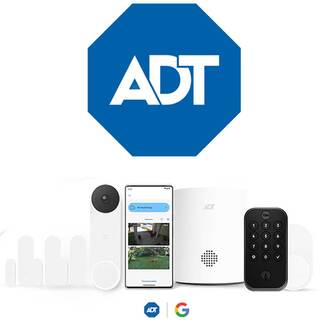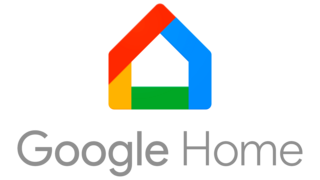Best Home Automation Systems
Smart home automation systems are the latest trend in technological advances designed to streamline your home life. Smart lights, touchscreens, video doorbells and voice-controlled gadgets are becoming increasingly more common, and with them comes a myriad of apps to control them.
Home automation allows you to control your entire smart home network through a centralized assistant or hub. This can help you more easily manage your home system and makes it easier to synchronize tasks by harnessing the compatibility and interconnectivity of your smart devices.
Our top picks for best home automation systems
- Best customer service: ADT Command
- Best for budget: Amazon Alexa
- Best for iPhone users: Apple HomeKit
- Best framework: Google Home
- Best for energy efficiency: Samsung SmartThings
Best home automation systems reviews
The companies in this article are listed in alphabetical order.
- 24/7 sensor monitoring and emergency response
- Z-Wave compatibility
- Pricier startup cost than other options
ADT Command is a smart home security system that can also be used for home automation. Its security touchpad integrates with smart devices in your home, such as locks, bulbs and thermostats. Additionally, the system is compatible with third-party devices enabled by Z-Wave, a communications protocol that facilitates home automation.
ADT Command uses geo-fencing technology to communicate with other smart devices, a virtual perimeter that can detect when a smart device enters or exits it. The process is streamlined and controlled through the ADT mobile app. ADT also assures personalized customer service for the duration of your contract. Pricing is available through quotes.
- Automate your home through premade Alexa routines, or build your own
- AI Hunches feature suggests actions based on routine behavior
- Abundance of ads on its smart hubs
Amazon’s smart devices are powered by its virtual assistant technology Alexa and can work as the centerpiece of a home automation system. The system allows you to automate lighting, cameras, thermostats and even televisions through a central hub.
Alexa-enabled systems come with pre-built automated tasks called routines. You can also build your own routines to automate a number of tasks around the house. AI can even suggest routines for you based on the data it gathers through the Hunches feature.
Amazon devices that work as home automation hubs include the Amazon Echo, Echo Show and Echo Dot. The devices come in a wide range of pricing models, with an Echo Dot available for under $30, while the newest Echo Show is available for just under $150. This variety makes Alexa the best option for home automation systems on a budget.
- Apple’s hardware is tailor-made to work with HomeKit
- HomeKit’s Secure Video platform processes footage locally
- Not many third-party enabled devices available
HomeKit, also known as Apple Home, is Apple’s user-friendly smart home software. Users can automate tasks around their HomeKit-enabled devices and apply voice commands through Apple’s digital assistant, Siri.
HomeKit’s Secure Video platform can process your smart camera footage locally through your Apple TV or HomePod, which is then stored in your iCloud account. This works best if you’re already using Apple-based products like an iPad or iPhone, as the company’s hardware is tailor-made to work with its communication protocols.
- Presence sensing can automate your Home and Away routines
- Routines can modify multiple smart devices at once
- No predictive AI Google Assistant capabilities
Google Home, also known as Google Nest, is a line of smart devices and home products developed by Google. The system can be used to automate and control devices through the Google Home app, the Google Nest Hub and other Android-enabled devices.
Google Home automation can even perform tasks known as routines based on whether you’re at home or not with a feature known as presence sensing. This can help automate tasks when you arrive or leave your home, such as turning the lights on or off and receiving calls through your smart speakers.
Google’s home automation framework works with devices compatible with Matter, an open-source connectivity standard developed in conjunction with other home automation companies. This, along with Google’s open-source approach to Android, makes Google Home the most versatile framework on the home automation market.
- AI Energy mode can help you save energy
- Works with a wide range of third-party hardware
- Hardware support quality can vary
SmartThings is a home automation company that is a subsidiary of Samsung. It focuses on the software side of home automation, and is available for many third-party hardware companies such as Bose, Ring and Sonos. SmartThings also works with Samsung’s appliances, including their smart washing machines, refrigerators and televisions.
SmartThings has a special focus on energy efficiency. Its AI Energy mode can help you automate tasks that keep energy consumption below a pre-set target. This can help you save on energy bills for your smart devices — or even non-smart devices — that are connected to your home via smart plugs.
Home Automation Systems Guide
Home automation systems can make our lives easier, but they can also be difficult to understand, especially for the less tech-savvy. In this guide, you’ll learn what home automation systems are, how they work and what their average cost is. This might help you decide if one of these systems is right for your home and budget.
What is a home automation system?
A home automation system allows multiple devices throughout your home to interact with each other via Wi-Fi and bluetooth or wireless protocols such as Zigbee and Z-Wave. This allows them to perform tasks automatically. Home automation systems also allow you to synchronize and control your home devices even when you’re miles away.
Home automation devices
Devices that may be part of your home automation system setup include:
- A smart home control center that can include a keypad or be voice assistant enabled
- Thermostats
- Lighting systems, including light bulbs
- Speakers
- Security cameras
- Smart locks
- Motion sensors
How do home automation systems work?
Home automation works by integrating multiple W-iFi-enabled devices to a single network, allowing them to communicate with each other. The system lets you control these devices remotely through app-assisted programming that operates through Bluetooth or a router, or have them do tasks automatically at specific times of day.
How much does home automation cost?
How much you spend on automation depends on how complex you want your home system to be. A simple setup with a low-cost hub — such as the Amazon Echo —, a smart light bulb and a smart plug can cost as low as $200, while a full setup can cost thousands of dollars. Services like professional installation of wired systems and maintenance add to the total cost.
Home automation installation
If you’re looking to install your home automation system by yourself, consider making a list of actionable items to keep the cost and work involved under control.
- Start by choosing the central hub of your preference. This will be the main point of contact between your phone, tablet or computer and your smart devices.
- Select the devices you want to have as a part of your system. The number of devices in your system will directly affect cost and the length of the installation process.
- Map out the installation and configure your devices accordingly. This will probably take the biggest chunk of your time, so plan your installation process well beforehand and make sure to leave room for any errors that will need correcting.
- Test out your setup to troubleshoot any potential errors or malfunctions. Make sure to check the corresponding manuals for help with any steps you might have missed.
Home automation and security system
Home automation can be part of your home security setup, and most security systems are compatible with Google Home, Amazon Alexa and Apple HomeKit automation systems. Others, such as SimpliSafe, have their own home automation framework that interacts with its own security systems.
Linking your home automation and security systems can provide ease of mind and increase the overall value of your property. Whether you opt for self-monitoring or professional monitoring, having your home automation system become a part of your security setup can make it easier to access, resulting in added security to your home.
Home automation systems FAQs
What is the best home automation system?
What is a smart home?
What is the difference between smart home and home automation?
How we chose the best home automation systems
The best home automation system for you will depend on a number of factors, including which devices you already use, the quality of the Internet connection available in your location and your budget. We looked at factors such as the amount of third-party hardware available, how much initial system hubs cost and how efficiently its AI integration executes its automated tasks.







